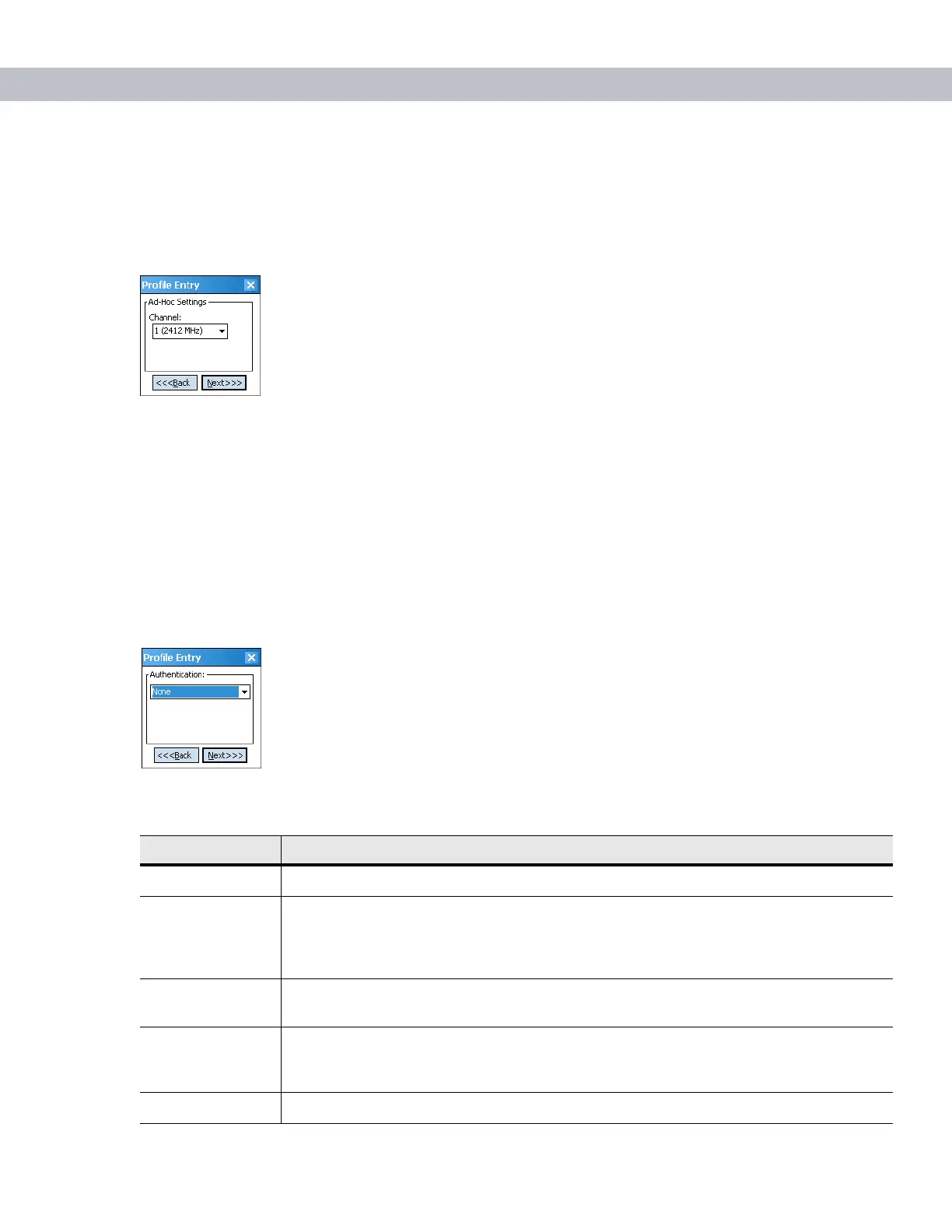Wireless Applications 7 - 7
Ad-Hoc
Use the Ad-Hoc dialog box to select the required information to control Ad-Hoc mode. This dialog box does not
appear if you selected
Infrastructure mode. To select Ad-Hoc mode:
1. Select a channel number from the Channel drop-down list. The default is Channel 1 (2412 MHz).
Figure 7-7
Ad-Hoc Settings Dialog Box
2. Tap Next. The Authentication dialog box displays.
Authentication
Use the Authentication dialog box to configure authentication. If you selected Ad-Hoc mode, this dialog box is
not available and authentication is set to
None by default.
Select an authentication type from the drop-down list and tap
Next. Selecting PEAP or TTLS displays the
Tunneled dialog box. Selecting None, EAP TLS, or LEAP displays the Encryption dialog box. See Encryption on
page 7-14 for encryption options. Table 7-6 lists the available authentication options.
Figure 7-8
Authentication Dialog Box
Table 7-6
Authentication Options
Authentication Description
None Default setting when authentication is not required on the network.
EAP-TLS Select this option to enable EAP-TLS authentication. EAP-TLS is an authentication
scheme through IEEE 802.1x. It authenticates users and ensures only valid users can
connect to the network. It also restricts unauthorized users from accessing transmitted
information by using secure authentication certificates.
PEAP Select this option to enable PEAP authentication. This method uses a digital certificate
to verify and authenticate a user's identity.
LEAP Select this option to enable LEAP authentication, which is based on mutual
authentication. The AP and the connecting mobile computer require authentication
before gaining access to the network.
TTLS Select this option to enable TTLS authentication.

